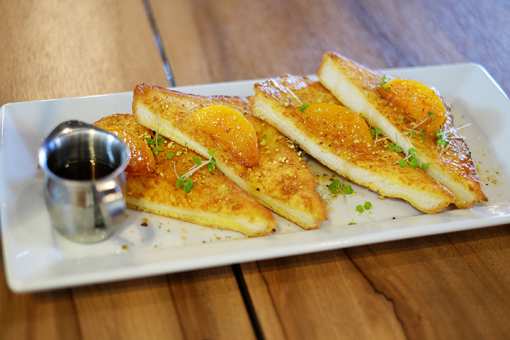History
The original owner of The Fillmore property, Emma Gates Butler, hired James W. and Merritt Reid in 1910 to draw plans for an Italianate-style dance hall at the southwest corner of Fillmore and Geary. The Majestic Hall and Majestic Academy of Dancing opened in 1912 on the second and third stories of the building, where the usual fare was Wednesday night socials and masquerade balls.
The Fillmore was a dance hall operating under various names and managements - The Get Acquainted Society, Ambassador Dance Hall - through the 1930s, and a roller rink through the 1940s. In 1952, local entrepreneur Charles Sullivan began to book some of the biggest names in black music into The Fillmore. Sullivan booked West Coast tours for performers including James Brown, Bobby 'Blue' Bland and Ike & Tina Turner. During the 1950s and 1960s, San Francisco gained a reputation as the preeminent Bohemian community in the United States. This reputation was never more deserved than during the mid-sixties, when the hipster of the Beat movement grew into the hippie of a more mainstream counter-culture. By the 1950s, the literary North Beach scene had given way to the emerging Haight-Ashbury, and radical politics had a niche across the Bay at the University of California at Berkeley. The line between culture and politics is easily blurred by young people in search of adventure.
In the search for fun and community, public dances became the craze in 1965. With Ken Kesey leading his band of Merry Pranksters to the outer limits of reality, and the Family Dog putting together dance concerts at Longshoremen's Hall, San Francisco was on its way to becoming the hip capital of the world.
Bill Graham was a veteran of the artistic community, but his greatest talents were his keen business acumen and his ability to organize events, creating comfortable and safe atmospheres without stifling the creative energies around him. Maintaining high aesthetic standards and calling on limitless personal energy, Bill pulled together a workforce that functioned as a family, and was a prime nurturing force in San Francisco's burgeoning scene.
In 1965, Bill Graham managed R.G. Davis's San Francisco Mime Troupe. The troupe's Commedia Del'Arte production of Il Candelaio was deemed 'too risque' by the San Francisco Parks and Recreation Commission, but they performed it anyway and were subsequently busted.
Bill staged a benefit for the group's legal defense fund. The Family Dog offered its help and Bill, who had been concentrating on his mime troupe duties and was not aware of the dance craze, listed The Family Dog as performers on the 'Appeal' party poster, thinking they were a dog act.
The November 6 fundraiser proved serendipitous; in seeking to raise money for the troupe and to increase awareness concerning censorship, Bill plugged into the vibrant youth scene. While many were drawn to the cause, many more were lured to the Howard Street loft by Jefferson Airplane, The Fugs, Sandy Bull, John Handy Quintet and 'Others Who Care.' Thousands flocked to the loft, and Bill successfully juggled the police, the door (and the back entrance), and the general mayhem to produce an event whiich united the nascent hippie community. Inspired by the success of the event, Bill held two more 'appeals' at The Fillmore Auditorium in December and January.
On February 4, 5 & 6, 1966, Jefferson Airplane headlined at The Fillmore in Bill's first non-benefit concerts, marking the true beginning of the company. By March, the youth happenings were a media-certified phenomenon, and the police didn't like it. Bill's request for a dance hall permit in his own name was denied. On April 19, Bill was again refused a permit and on the 22nd the police, incensed by a cartoon in the previous day's San Francisco Chronicle, raided The Fillmore and arrested 14 kids. Bill joined the fracas and ended up in jail as well.
Public outrage concerning the police crackdown was registered in the newspapers and charges against Bill were formally dropped on May 24. On June 6, the Boars of Permit Appeals reversed its decision and certified Bill a 'dance-hall keeper.' Lets take a look at what The Fillmore was like then back during those 'history in the making' years.
'The greatest compliment I was ever given came at The Fillmore. It was Cream and the Butterfield Blues Band. I just happened to go into the rest room during a break. I was standing at the middle urinal when two guys came in after me, one on either side...right out of the blue, one said, 'I forgot. Who's playing here tonight?' Without batting an eyelash, the other guy said, 'I don't know, man. What's the difference? It's The Fillmore.' -Bill Graham
The Fillmore represented the pinnacle of creative music making in the late 1960s. From December 10, 1965, when Bill Graham produced a San Francisco Mime troupe benefit (Jefferson Airplane with Great Society and Mystery Trend; the Warlocks, later the Grateful Dead, kicked off the show), until July 4, 1968, The Fillmore audiences experienced a 2 1/2 year musical and cultural Renaissance that produced some of the most innovative, exciting music ever to come out of San Francisco. The careers of the Grateful Dead, the Jefferson Airplane, Santana, Quicksilver Messenger Service, Big Brother and the Holding Company, Moby Grape, the Butterfield Blues Band, and countless others were launched from The Fillmore stage. The most significant musical talent of the day has appeared there: Jimi Hendrix, Otis Redding, Cream, Howlin' Wolf, Captain Beefheart, Muddy Waters, The Who - well, you get the picture. Or you've heard the stories. If you're lucky, you were there.
A sample month of shows Bill presented at The Fillmore, August of 1967: Aug. 1-6: Muddy Waters, Buffalo Springfield, Richie Havens. Aug. 8-13: Electric Flag, with Moby Grape and Steve Miller Blues Band. Aug. 15-17: Chuck Berry and Charles Lloyd Quartet, with Steve Miller Blues Band opening. Aug. 18-19: Young Rascals and Charles Lloyd Quartet. Aug. 20-21: Count Basie Orchestra with Charles Lloyd Quartet. Aug. 22-27: Butterfield Blues Band and Cream. Aug. 29-31: Cream, Electric Flag, Gary Burton.
The Fillmore was also used to stage non-musical events, including Michael McClure's The Beard; Leroi Jones'The Dutchman, performed on the floor among the audience at a Byrds show; a reading by Russian poet Andrei Voznesensky, paired with Jefferson Airplane (no other theater in the Bay Area would rent its space to a Communist); Lenny Bruce's last public appearance on a bill also featuring Frank Zappa and The Mothers of Invention; and Thanksgiving dinner for The Fillmore family and friends, which became an annual tradition.
Always, a Fillmore ticket was a ticket to see and hear the most exciting up-and-coming talents, in an exciting place, the place where it was all happening. It wasn't only because you'd be as likely to see Miles Davis opening for the Grateful Dead as a three night run of Jefferson Airplane and Quicksilver Messenger Service with the Mothers of Invention opening the show. Partly, it was the free apples in the gleaming copper bucket at the top of the ruby-carpeted stairway. Or the catered New Year's Day breakfasts ('With no powdered eggs, either...' -Bill Graham) Bill served for 1,200 afer a twelve-hour music and dancing marathon.
'There was very much a whole kind of Fillmore energy coming off the audience that combined with the band,' Eric Clapton remembers. 'When we played the Fillmore for the first time (with Cream) the band was in the light show. If you were in the audience, you didn't know who was playing. Not at all. It was a sensory thing.'
Bill Graham's policy of introducing Fillmore audiences to eclectic musical combinations turned on a generation to the music of people like Otis Rush, Junior Wells, Jimmy Reed, The Staple Singers and Rahsaan Roland Kirk. In the process, Bill created and refined the art and skill of modern concert production as audiences all over the country have come to know it. Bill invited artists like LeRoi Jones, Otis Redding, Lenny Bruce and Chuck Berry to play at The Fillmore - some with a simple phone call, but to woo Otis he went to Macon, Georgia. He went to Wentzville, Missouri to sell Chuck Berry on The Fillmore in person. 'Back then, it was a brave move to mix up soul acts with the most extreme of white music at the time. Bill was the first one to do it in a big city on a regular basis,' The Stones' Keith Richards says. 'Especially in a community joint like The Fillmore where people virtually lived...Bill really did create an opportunity that changed a lot of things.'
Bill said farewell to The Fillmore on the Fourth of July with a show featuring Creedence Clearwater Revival, Steppenwolf and It's a Beautiful Day. The audience for the music had mushroomed, and the shows moved to the Carousel Ballroom at Market and Van Ness in San Francisco (later renamed the Fillmore West) and Winterland. That brought to a close one of the most seminal periods in The Fillmore's long and colorful history.
The Fillmore became a private neighborhood club for a time in the 1970s, and in the early 1980s, Paul Rat produced shows at the building (dubbed the Elite Club) with Black Flag, Bad Brains, The Dead Kennedys, T.S.O.L., Flipper, Public Image Ltd. and others. Bill Graham Presents produced a few events in the building in the 1980s, including the 20th anniversary party for the company, and filmed an HBO Fillmore music special there. In 1986, owners Bert and Regina Kortz hired Michael Bailey to begin producing shows in The Fillmore. The first show was Husker Du on April 30, 1986. But Bill always had a special place in his heart for the first place he ever did shows. On March 3, 1988, he returned to the original Fillmore with a show featuring African reggae act Alpha Blondy & The Solar System and Little Women.
The nightclub wing of Bill Graham Presents produced shows in The Fillmore from March 1988 until the 1989 earthquake. Bill's death in a helicopter accident in October 1991 inspired everyone at Bill Graham Presents to finish one of Bill's final pet projects: to restore and once again make music in the building he loved more than any other. The Fillmore is carrying on in Bill's tradition by continuing to present the best popular music being made today.





